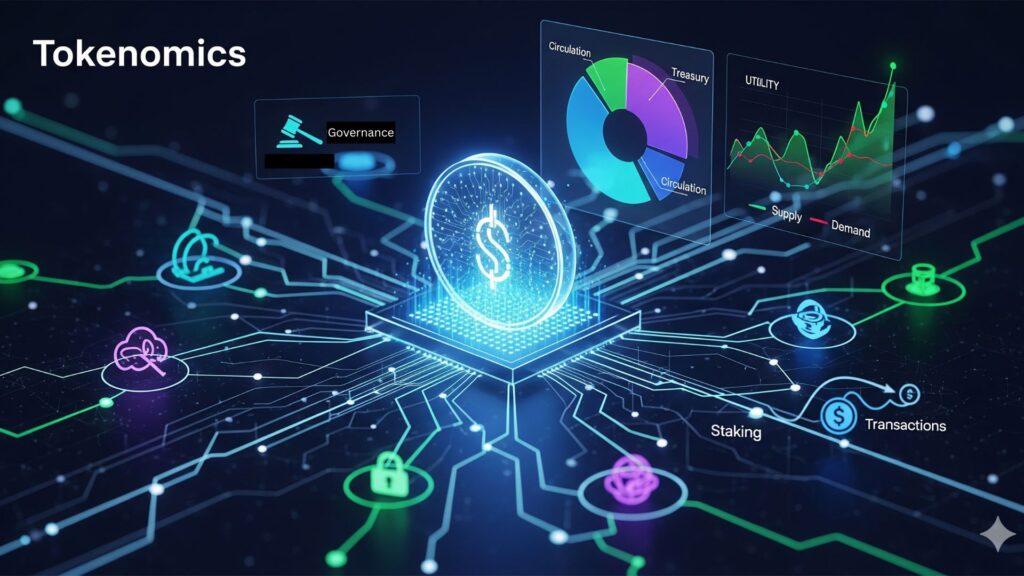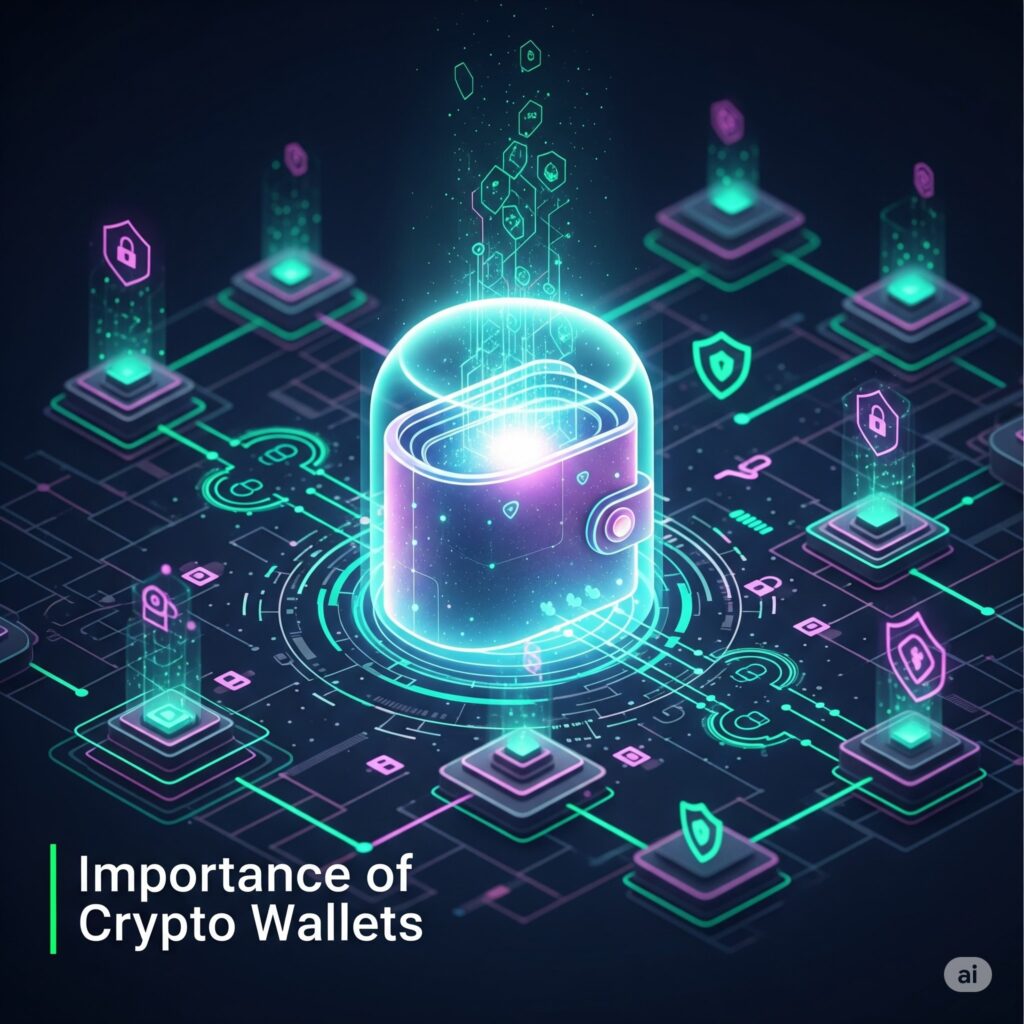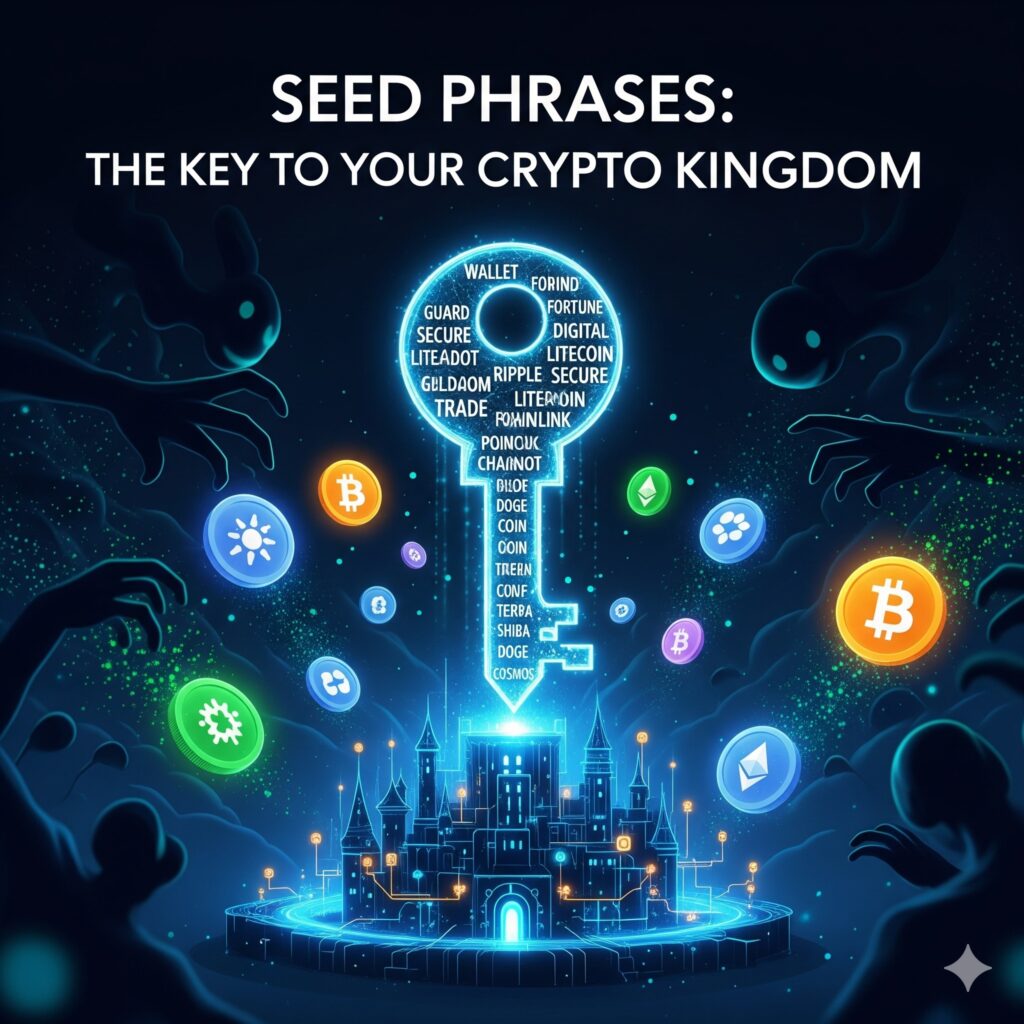Understanding Tokenomics: The Economics of Cryptocurrencies
- August 25, 2025
- 10:48 am
- Chinmay J
Tokenomics: Your blueprint for every crypto project
Introduction
In the rapidly evolving world of cryptocurrencies, one term stands out as the key to unlocking the value and potential of digital assets: Tokenomics. Whether you’re a novice investor eyeing Bitcoin or a seasoned trader analyzing altcoins, grasping tokenomics can make the difference between smart decisions and costly mistakes. This blog post dives deep into what tokenomics is, how it works, how it differs from traditional financial economics, and real-world examples using Bitcoin as a case study. By the end, you’ll have a solid foundation to evaluate crypto projects more effectively.

What is Tokenomics?
- Tokenomics, a portmanteau of “token” and “economics,” refers to the study and design of the economic models behind cryptocurrencies and tokens. It encompasses the rules, mechanisms, and incentives that govern a token’s supply, distribution, utility, and demand within its ecosystem. At its core, tokenomics outlines how a token functions as a digital asset, much like how a company’s business model defines its operations.
- Think of tokenomics as the blueprint for a crypto project’s economy. It includes aspects like total supply (e.g., capped like Bitcoin’s 21 million coins), inflation/deflation mechanisms, and governance rights for holders. For instance, some tokens burn a portion of fees to reduce supply over time, creating scarcity and potentially driving up value.
Building Blocks of Tokenomics
Tokenomics isn’t just theory, it’s a practical framework that determines a project’s success. Key components include:
- Supply Mechanics: This covers maximum supply, circulating supply, and issuance rates. A fixed supply (e.g., Bitcoin) can lead to deflationary pressure, while unlimited supply (e.g., some stablecoins) aims for stability.
- Demand Drivers: Utility is king. Tokens can serve as payment (e.g., for transactions), governance (voting rights), or staking rewards. High demand comes from real-world use cases, like DeFi lending or NFT marketplaces.
- Incentives and Distribution: How tokens are allocated—via mining, airdrops, or presales—affects fairness. Poor distribution (e.g., heavy founder allocation) can lead to dumps and loss of trust.
- Governance and Economics: Token holders often vote on upgrades, creating decentralized decision-making. Economic models like burning or locking tokens influence long-term value.
Comparing Tokenomics to Traditional Financial Economics
Traditional financial economics focuses on fiat currencies, stocks, and bonds in centralized systems regulated by governments and banks. Tokenomics, by contrast, operates in decentralized, blockchain-based environments. Here’s a breakdown:
- Centralization vs. Decentralization: Traditional economics relies on central banks (e.g., the Federal Reserve controlling USD supply via interest rates). Tokenomics uses smart contracts and consensus mechanisms for automated, trustless rules, no single entity controls supply. For example, the Fed can print money infinitely, leading to inflation; Bitcoin’s tokenomics caps supply at 21 million, mimicking gold’s scarcity.
- Value Creation: In traditional finance, stock value comes from company earnings (e.g., P/E ratios). Tokenomics values tokens via network effects and utility (e.g., Metcalfe’s Law: value grows with users squared). Stocks pay dividends; tokens offer staking yields or governance rights.
- Inflation/Deflation Models: Traditional economies target ~2% inflation for growth. Tokenomics can be deflationary (e.g., burning fees in Ethereum’s EIP-1559, reducing supply). This creates scarcity, potentially increasing value faster than stocks in bull markets.
- Risk and Regulation: Traditional assets have regulatory safeguards (e.g., SEC oversight). Tokenomics faces higher volatility and scam risks but offers global access without borders. Example: Enron’s accounting fraud vs. crypto rugs like Squid Game token.
Coin Valuation Using Tokenomics: Bitcoin as an Example
Tokenomics provides tools to assess a coin’s worth beyond price speculation. Valuation methods include supply-demand analysis, utility metrics, and network value models. Let’s use Bitcoin (BTC) as an example, the original crypto with exemplary tokenomics.
- Supply Analysis: Bitcoin’s fixed 21 million cap creates scarcity. As of 2025, ~19.7 million are mined, with halvings every 4 years reducing issuance (next in 2028). This deflationary model drives value, similar to gold’s “stock-to-flow” ratio, where high ratios predict price rises. Projection: By 2030, scarcity could push BTC to $500,000+ if demand grows.
- Demand and Utility: Bitcoin’s primary utility is as “digital gold”, a store of value and hedge against inflation. Adoption by institutions (e.g., MicroStrategy holding 200,000+ BTC) and ETFs (e.g., BlackRock’s IBIT) boosts demand. Network effects: More users (e.g., Lightning Network for fast payments) increase value per Metcalfe’s Law.
- Economic Incentives: Miners secure the network via PoW, earning block rewards. Halvings (e.g., 2024 reduced to 3.125 BTC/block) create supply shocks, historically spiking prices (e.g., 2020 halving led to 300% gains).
Why Tokenomics Matters for Your Crypto Journey
Tokenomics is the lens through which savvy investors view crypto’s true potential. By understanding supply, demand, and incentives, you can spot gems like Bitcoin early and avoid duds. As blockchain evolves, tokenomics will shape the future of finance which is decentralized, transparent, and empowering. Whether valuing BTC or exploring new tokens, always DYOR and consider tokenomics first. What’s your favorite crypto’s tokenomics story? Share in the comments!
Click here to buy our book on Basics of Tokenomics from Amazon.com.
Click here to to buy the Tokenomics Amazon e-book for only $2.99.
Knowledge Test
- What is tokenomics?
- Name one key component of tokenomics.
- How does tokenomics differ from traditional economics in terms of centralization?
- What model is used to value Bitcoin based on scarcity?
- Give an example of a demand driver in tokenomics.
Answers
- Tokenomics is the economic model behind cryptocurrencies, covering supply, distribution, utility, and demand.
- Supply mechanics (e.g., total supply or issuance rates).
- Tokenomics is decentralized with no central authority, unlike traditional economics reliant on central banks.
- Stock-to-Flow (S2F) model.
- Utility, such as payment, governance, or staking rewards.


